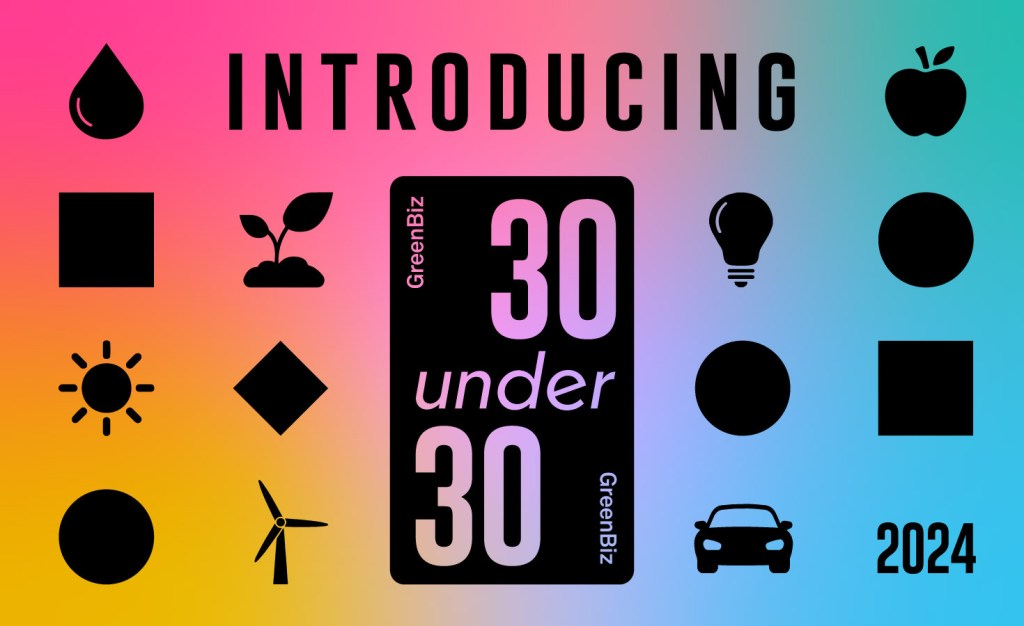Startups vs. big companies: 3 ways to ease the friction and spur decarbonization
A call for a new set of values for founders, and the companies that can become their launchpads. Read More

If climate tech is to scale and help accelerate the deep decarbonization the world urgently needs, we’ll need to ease the challenges startups often face working or partnering with large companies, and quickly.
Startups rely on large companies as testing grounds to prove their technologies — and, of course, as customers for their products and services.
But for every successful acquisition or partnership, there are countless stories of startup-corporate collaborations that never achieved liftoff. The friction points vary, but typically have to do with differences in cultures, communications styles, time horizons and overall expectations, among other things.
When it comes to climate tech startups — which typically involve bigger investments, longer time horizons and less-developed markets than traditional tech startups — these friction points can loom even larger. The result: Innovations get stuck in a development pipeline — sometimes, never to be heard from again.
“Commercialization starts on day one,” advised Cyrus Wadia, CEO at Activate, a non-profit that provides fellowships to scientists and engineers to help commercialize their climate tech innovations. “If you’re an entrepreneur, you can’t start thinking about it five or six years later and expect someone’s going to help you do that.”
Wadia, who has seen all sides of these relationships in prior roles at the White House, Nike, Amazon and a tech startup, joined about 60 corporate venture executives, entrepreneurs, investors and industry experts to identify and discuss ways climate tech startups and large companies can better work together, during a half-day Climate Tech Commercialization Forum in October, held in partnership with Activate at VERGE, Trellis’s annual climate tech event. (The forum was held under Chatham House rule so individuals and organizations can’t be named without their permission. All those identified here agreed to be.)
Potential solutions to avoid the startup-corporate pitfalls fall into three overarching categories: financing; technology de-risking; and organizational leadership and logistics.
A new way to finance innovation — offtake agreements: It’s probably not surprising that one big finance challenge is the lack of capital available for companies to engage in strategic partnerships with startups. Venture capital spending accounts for only around 1 percent of total corporate innovation budgets, according to the most recent analysis of the top 2,500 global corporations by R&D spending across all categories, with climate tech startups receiving a relatively small slice of that pie.
But it’s not all about investments. One relatively easy way large companies can boost early-stage climate tech innovations is through offtake agreements, a contract that establishes a buyer’s intention to purchase a portion of a seller’s future output. Offtake agreements already are being used in climate tech sectors, such as renewable energy, where buyers agree to purchase the output of a windfarm yet to be built, or where buyers commit to purchase carbon credits from specific projects once those credits are independently verified.
De-risk technology by measuring adoption readiness: For decades, technologies of all types have been assessed on the basis of something called Technology Readiness Level (TRL), a framework invented by NASA in the 1970s and adapted by the U.S. Department of Defense in the 2000s. TRLs, which use a scale of 1 to 9, attempt to measure the maturity of a given technology.
But TRLs are not necessarily the right metric for climate tech, said Vanessa Chan, chief commercialization officer in the U.S. Energy Department’s Office of Technology Transitions. Her office developed a different metric: Adoption Readiness Level (ARLs), which assess 17 dimensions of a climate technology and, like TRLs, translates that into a 1-to-9 score.
ARLs are a complement to TRLs, Chan told the group. They look beyond the technology itself to assess more market-facing issues, such as the availability of capital, the regulatory environment, the performance relative to incumbent technologies and cost competitiveness when a technology is produced at full scale.
Bridge culture and communications: Here’s where some differences in culture and communications can be smoothed over. There was plenty of discussion about the need for open communication and the need to build trust early on in corporate-startup engagements. Sometimes that means “being honest with oneself” about what is expected from the other party, as one participant pointed out.
Creating peer groups of both entrepreneurs and corporate VCs focusing on climate tech was suggested as a way to share lessons and boost leadership in the field.
Next up: A call for more metrics and models
Looking beyond the traditional venture capital model for startups was seen as another way to increase collaboration between startups and corporations. Capital-intensive climate tech ventures typically require longer development cycles and capital infusions than VCs are typically used to, and may involve business model shifts (accessing instead of owning a product, for example) that may be considered by traditional VC investors to be risky when selling into mature markets. As a result, climate tech startups often struggle to engage with traditional VCs.
“Everything we’re teaching founders comes from the VC playbook,” Leila Madrone, entrepreneur in residence at Activate and founder of a solar startup, told the group. “The problem is, without any other playbooks, what choice do they have? I’m challenging us as a community to start thinking about what those other playbooks look like.”
When it comes to startup-corporate partnerships, she said, the two parties often view different metrics for success. “Every founder talks about how much money they’ve raised and what their valuation is over and over and over again. They are trained to think that is their core value because they’ve been trained in this VC pathway. But I don’t think that’s necessarily what a corporate partnership is going to thrive on.” Rather, she suggested, startups should emphasize the business value to its corporate partner.
Madrone asked, speaking to the large companies in the room but referring to startups: “How do we train them better, so that they’re coming to you with the right mindset and the right playbook to work with you, instead of coming with the wrong playbook and the wrong set of values? Help us think about building that new ecosystem, a new set of values for the next set of founders that we want to have work with you.”
More on the collaborative challenges
Earlier in the event, participants broke into three groups: startups; corporates; and “ecosystem,” comprising government agencies, accelerators, investors and others whose work cuts across the first two groups. They spoke openly about the biggest challenges they face working together. They identified misaligned promises and expectations between corporates and startups, and cultural and language differences that often got in the way of effective work styles and communications.
Startups emphasized the following friction points:
- The number of corporate decision-makers — from engineering to marketing to finance to administration — required before engaging with startups.
- Difficulty finding the right corporate contact who would be sufficiently invested in collaborating with a startup;
- Companies’ desire to find fully developed products or ideas, but which were too early in the startups’ development cycles; and
- A lack of transparency by corporates that were unwilling to share key trade secrets with startups
Corporates, for their part, identified their challenges with startups, including:
- A lack of agreed-upon goals or success metrics;
- The gap between simulation and real-world testing of startup technologies;
- A lack among startups to secure intellectual property rights; and
- Cultural differences with startup founders, who often hailed from the university labs and business schools — “academic snobbery,” as one corporate participant put it
[Join your community, including the most influential voices in sustainability, at GreenBiz 25, Feb. 10-12, Phoenix.]














